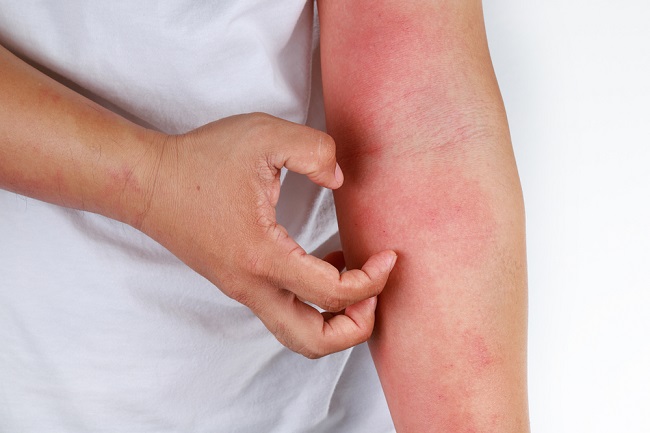There are various skin diseases in infants that are common. Parents need to recognize this condition, because baby's skin is still very sensitive and susceptible to interference.
Although capable of protecting the body, the epidermis layer of the skin of infants under one year of age is still not able to function effectively. So that the baby's skin is more susceptible to skin disorders, which can be characterized by skin redness, peeling, or red spots or rashes and other skin diseases in babies.

Various Skin Diseases in Babies
Here are some skin diseases in babies that often occur:
- Prickly heatOne of the most common skin diseases in babies is prickly heat. Prickly heat is characterized by the appearance of small red bumps that are commonly found on the face, neck and back. Prickly heat occurs because the baby's skin has not been able to regulate the temperature properly. So, avoid wearing clothes that are too tight, humid air and hot weather because they can trigger prickly heat on baby's skin.
- Chicken poxChickenpox appears in the form of a rash and red, fluid-filled bumps on the skin all over the body. These red nodules can break open, then dry out, and leave a crust. Chickenpox can cause itching and cause blisters that leave scars on the skin if scratched. To reduce the risk of transmission, it is recommended to give chickenpox immunization to your child.
- IntertrigoIntertrigo is characterized by a red rash that is generally found in the folds of the baby's skin on the neck. Babies who are obese and less than six months old are at a higher risk of developing this skin disease. Intertrigo is caused by excessively moist neck skin. Saliva that drips on the neck trapped in the folds of the skin can be the cause of the intertrigo rash appearing.
- EczemaSince the age of 3-4 months, babies can already experience the symptoms of eczema. Eczema can appear anywhere on the body, but is more common on the skin on the face and in skin folds. This skin disorder is characterized by rough skin accompanied by itching. Some triggers for eczema complaints in babies, including hot weather, cold weather, detergents, fragrances, and clothing materials used.
- wartWarts can occur in infants and children due to viral infections or infected adults. This skin disease in infants is commonly found on the fingers and hands. Generally, warts are not painful, but can spread easily through direct contact with infected people or objects exposed to the virus. To prevent spread, cover the wart with a loose bandage. Tell your child not to bite his nails or pick at the warts.
- Contact dermatitisSo called because this skin disease in infants arises when the baby's skin comes into contact with various triggers. For example, clothing materials, carpets, soap, even grass or plants around the house. Contact dermatitis can be seen by the presence of a rash on the part of the body that is in contact with the cause. To prevent this, avoid the baby from contact with the cause. If the rash looks dry, you can apply a moisturizing lotion as directed by your doctor.
Parents are advised to find out the factors that can be the cause of skin diseases in babies. By knowing the trigger factors, skin diseases in infants can be prevented as much as possible. If your baby seems to be experiencing bothersome symptoms of skin disease, you should immediately consult a dermatologist or pediatrician for proper treatment.









